Laying tiles can be an art. It’s about not only cutting and placing tiles, it requires years of practice and a good eye for design to plan a layout and merge tiles of different textures and thickness together in an appealing pattern. And it’s not only about the experience and expertise of the tiler, it’s also about the materials. The tile tools play a major role in a construction job.
Therefore, we want to give you the best advice and information on how to tile and how to choose the right tile tools, depending on the type of project and the phase of the process. By selecting the right tile tools, you can reduce the time required to finish a project and ensure that your tools remain undamaged.

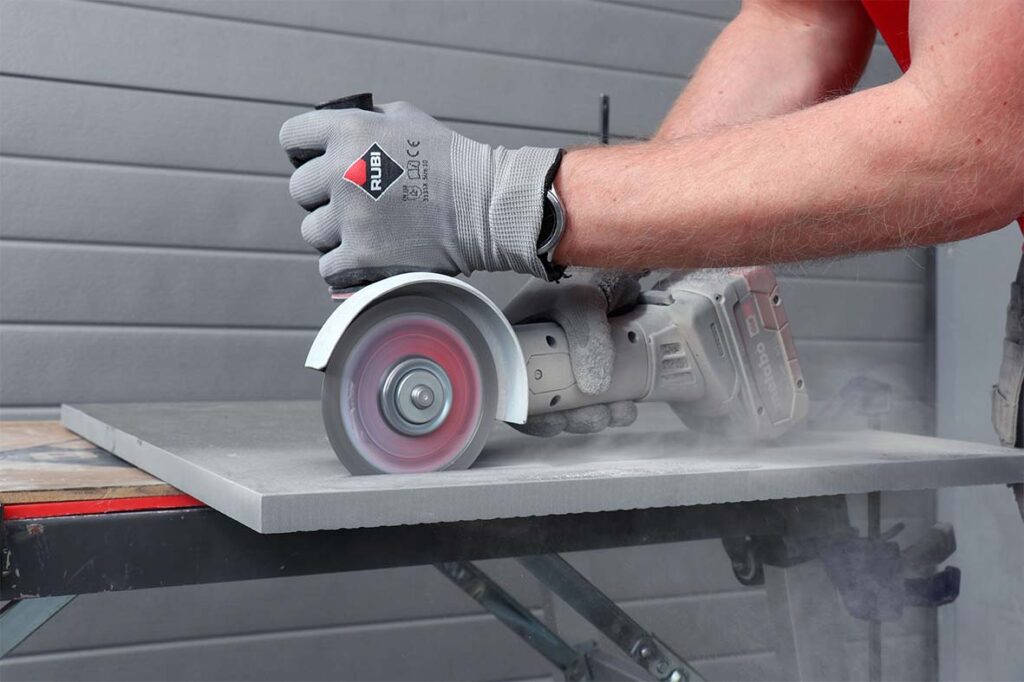
10 key tile tools that a tiler must have in their toolbox
With all this in mind, here’s a list of 10 essential tools that every tiling specialist should have in their toolbox.
1. MANUAL TILE CUTTERS
One of the most important tools you’ll need is a robust manual tile cutter. Versatile, lightweight, and user-friendly, it can effortlessly handle even the most challenging tasks.
Not only does a manual tile cutter offer increased cutting speed, but it can also be operated with just one hand. The cuts it produces are clean and precise, without compromising the quality of the surface material, whether you’re working with ceramic, extruded, or porcelain tiles.
Look for a tile cutter that comes with different cutting measurements, such as 600mm, 900mm or even 1550mm if you plan to cut large format tiles. From the popular TX-Max range to our new and latest RCH range of manual tile cutters, RUBI offers a diverse range of manual cutters to meet your specific needs.
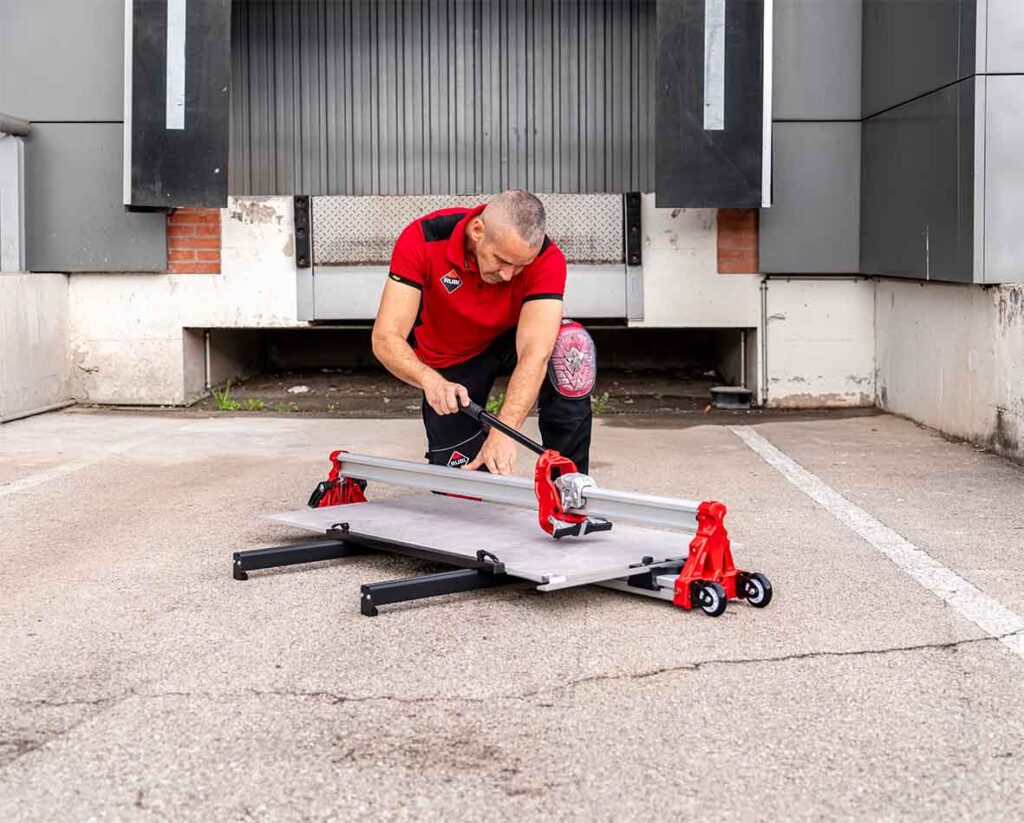
2. ELECTRIC TILE CUTTERS
Most tiling jobs require tiles that fit perfectly when they are fixed, so you need an accurate cut. A professional electric cutter is essential if you want to make fine cuts on a variety of materials, such as ceramic, glazed stoneware, or porcelain tiles.
If you’re looking for a precise electric cutter, the DC-250 Python is a must-have for professional tilers in terms of quality, versatility, and durability. Another good option is the DT-250 Max of lightweight portable cutters that are ideal for renovations and light work.
3. DIAMOND BLADES
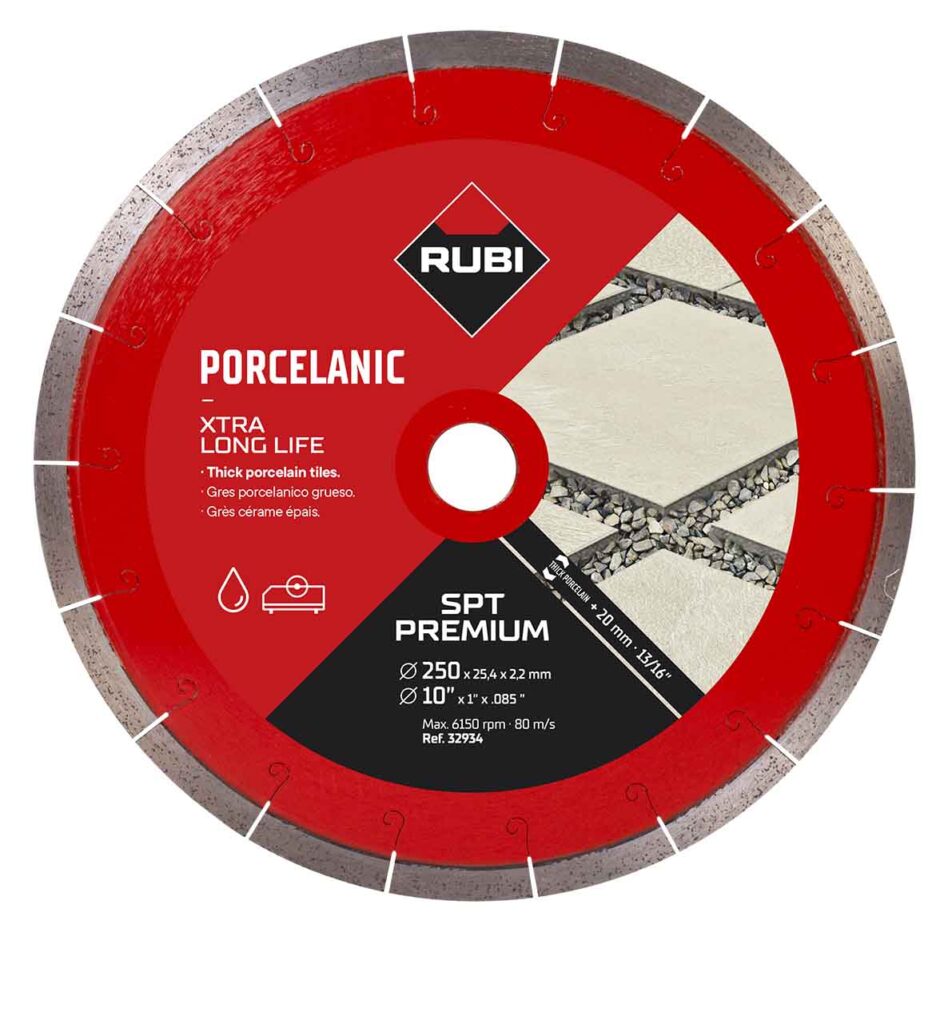
Selecting the right blade is no simple task. It’s crucial to understand its intended application and whether it’s for dry or wet cutting, among other factors. One of our top recommendations is the SPT diamond blade—a segmented diamond blade specifically designed for cutting 2cm porcelain tiles.
Another excellent option is the CEV continuous rim diamond blade, ideal for ceramic tiles. This versatile blade is suitable for cutting both wall and floor tiles. However, if you require a blade for cutting tougher materials like granite, rustic tiles, clinker refractory, slate, or porcelain tiles, the TVH turbo viper diamond blade is the optimal choice.
Another new product perfect for making mitre cuts, is the TPI mitre turbo diamond blade.

4. DIAMOND DRILL BITS
You may find the need to drill holes into tiles for pipes, drains, or tap connections. Drilling tiles demands mathematical precision and top-notch tools to ensure breakthrough without cracking the surface.
A drill bit kit is indispensable, particularly when working with hard materials like porcelain. Look for drill bits with various diameters that will facilitate cutting holes in tiles of various sizes and in different types of ceramic or natural stone. These will allow for easy and safe drilling, resulting in optimal finishes.
Look for a diamond drill bits kit that allows for wet cutting so that you can reduce the amount of dust and noise on the site. Additionally, make sure the tool has lateral openings that can improve the cooling of the drill bit. These openings will facilitate the removal of residues after each hole, making the installation process fast and smooth.
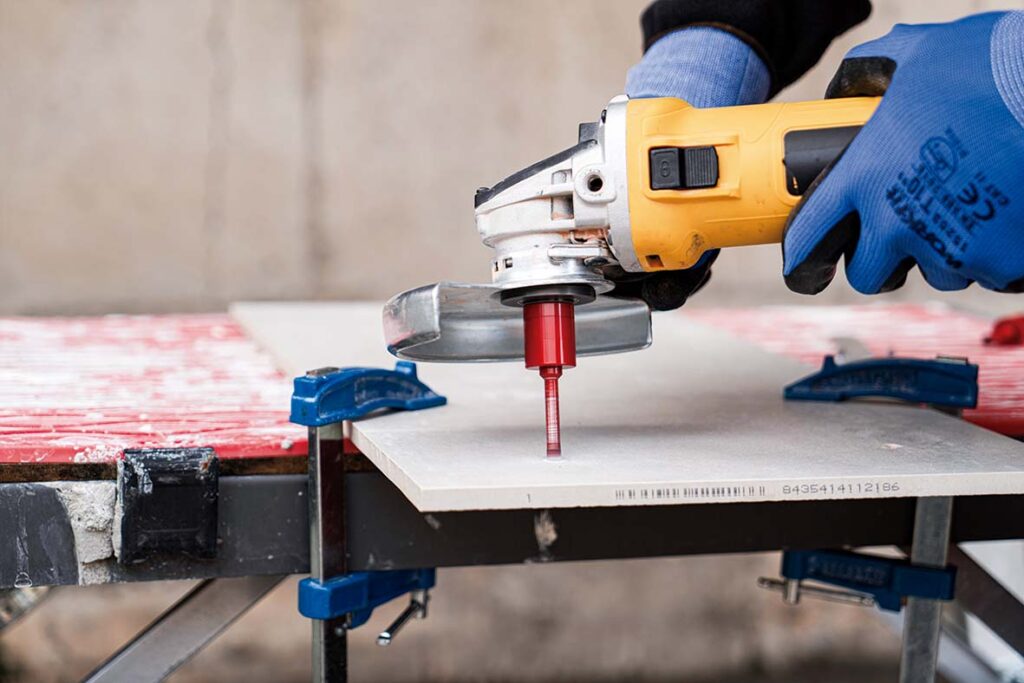
5. ELECTRIC MIXER
A mortar mixer is also indispensable for any tiling project. With it, you can achieve a homogeneous mixture tailored to your requirements and guarantee a durable installation in the long run.
Electric mixers are available in a variety of speeds and motors, perfectly suited for mixing cement, adhesives, paints, resins, and other materials. As a rule of thumb, always check that you are using the adequate paddle for the mortar mix being used.
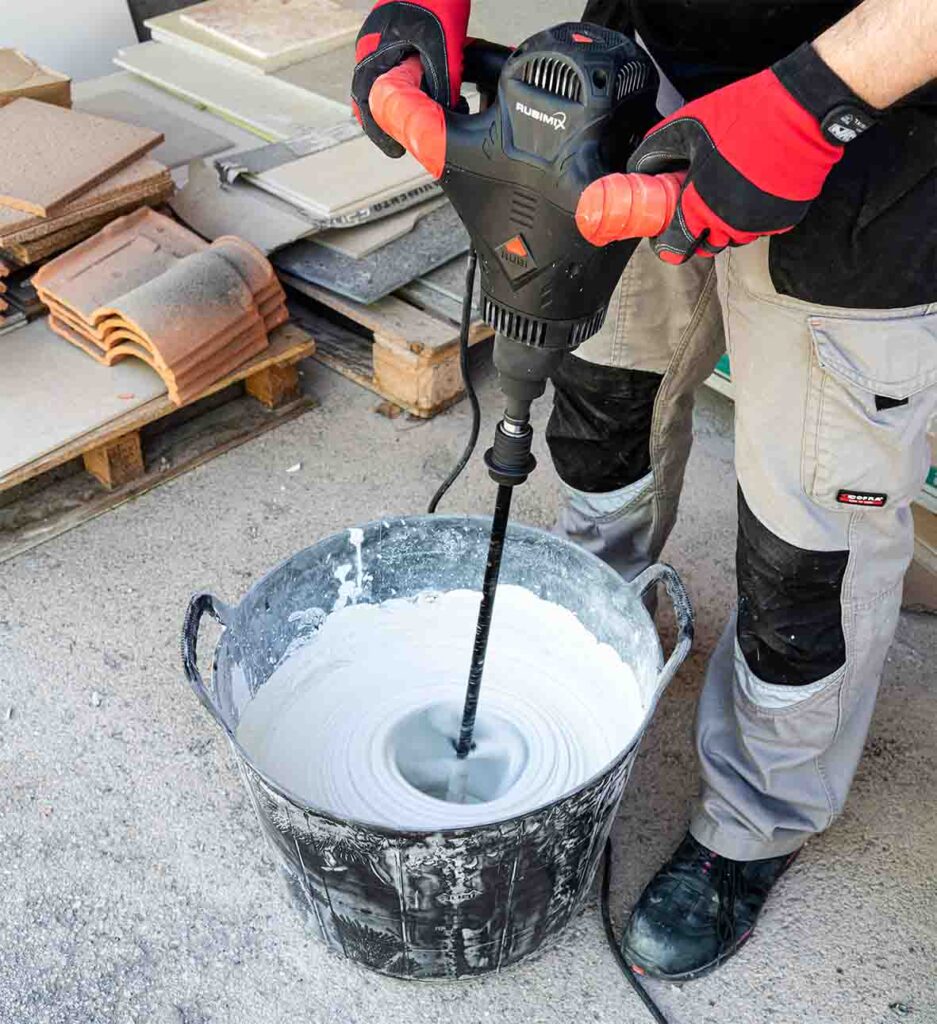
6. RUBBER BUCKETS
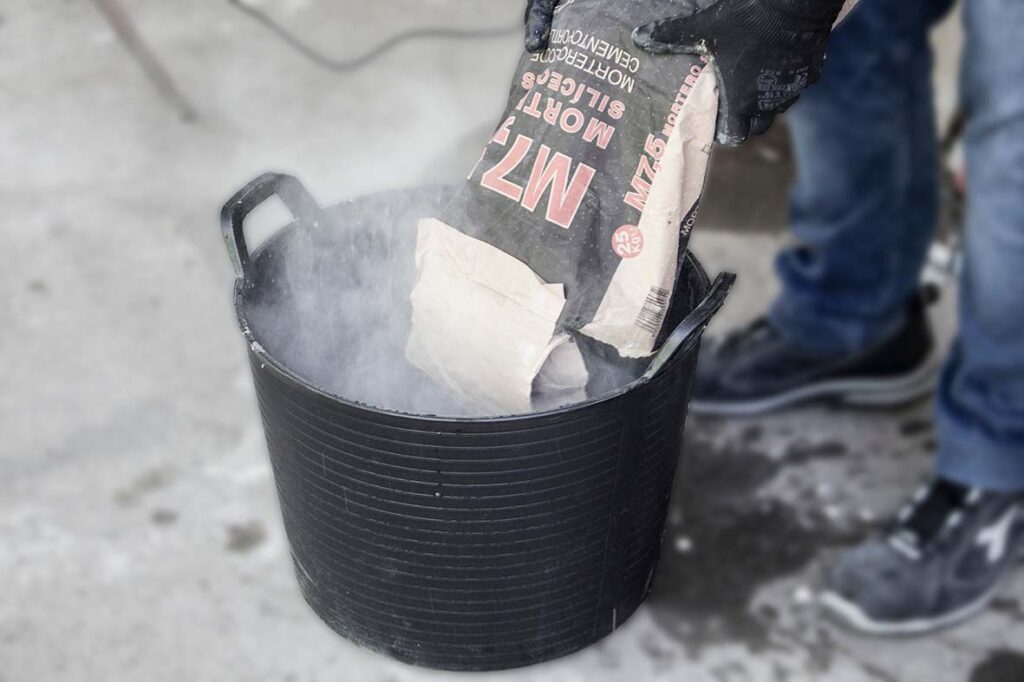
One of the most important tiling tools that is often overlooked is the good old rubber bucket. It serves multiple purposes, from mixing and transporting mortar to its ease of cleaning due to its rubber material, which surpasses plastic buckets in this regard.
Even if the mortar is completely dry, you will invest less time in cleaning a rubber bucket than a hard plastic one. Durable and versatile, rubber buckets are an excellent addition to your must-have tools for tiling. Not to mention, they are stackable and don’t take that much space, so make sure to buy them in different sizes.

7. TILE TROWELS
Depending on the type of tiles you install, whether ceramic or natural stone, you’ll need to fix them to the surface with a cement-based mortar. You will need to properly apply the mortar to make the tiles adhere as evenly as possible to the wall or floor.
The tile trowel is one of the most important tile installation tools if you want a clean and professional result. When choosing a trowel, make sure you choose the right size so that you get proper coverage every time.
Look for a trowel that is lightweight yet sturdy to facilitate the mortar mix application. Pay attention to the shape of the trowel as well as this can determine the ease with which the tile is embedded fully into the adhesive. Since every tile installation project has its specific requirements, we recommend you purchase both a U-notched and a square-notched trowel.
8. RUBBER GROUT FLOATS

Grouting is just as crucial as any other step in the tiling process. Without it, the surface would appear uneven and incomplete, as grout fills the spaces between tiles, securing them together.
Now, what is a rubber grout float? It’s a robust and flexible rubber pad attached to a C-shaped handle. Depending on its hardness or thickness, it offers you the optimal finish. However, it’s important to note that certain designs are more suitable for reaching difficult areas, while others facilitate the spreading of grout over larger areas with ease. Therefore, it’s essential to consider your specific needs before selecting a rubber grout float.
9. TILE LEVELLING SYSTEM
The tile levelling system is used to avoid tile lippage and improve the final result. There are different tile levelling systems but the Cyclone Levelling System, is a good and versatile option in both floor and wall tiles.
What characterizes this system is the intuitive twist cap system. No additional tools are required for its installation or removal.
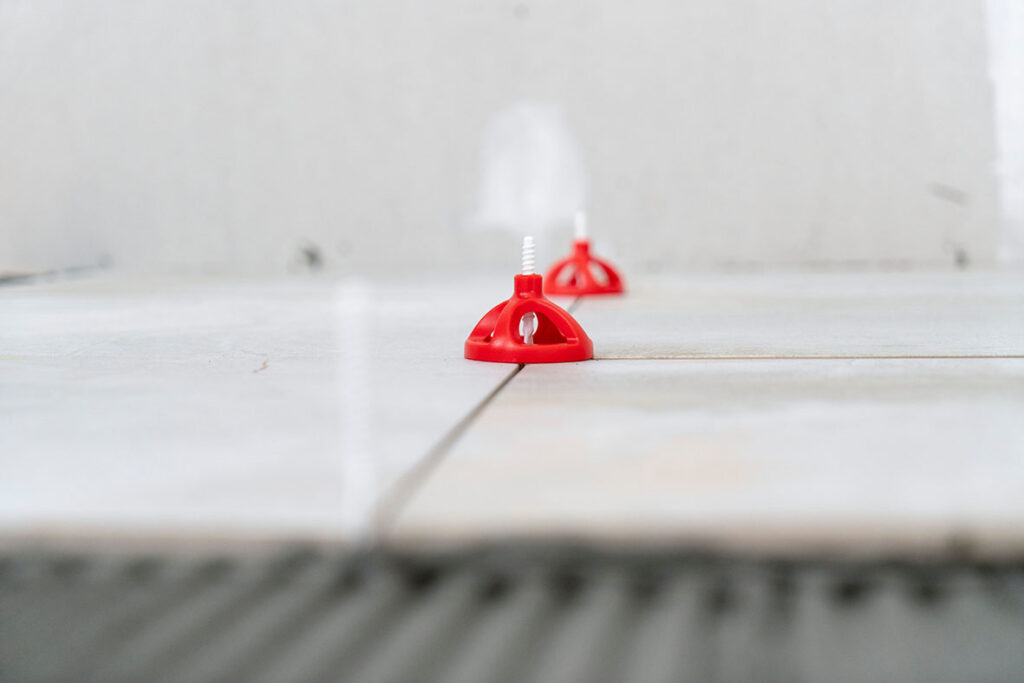
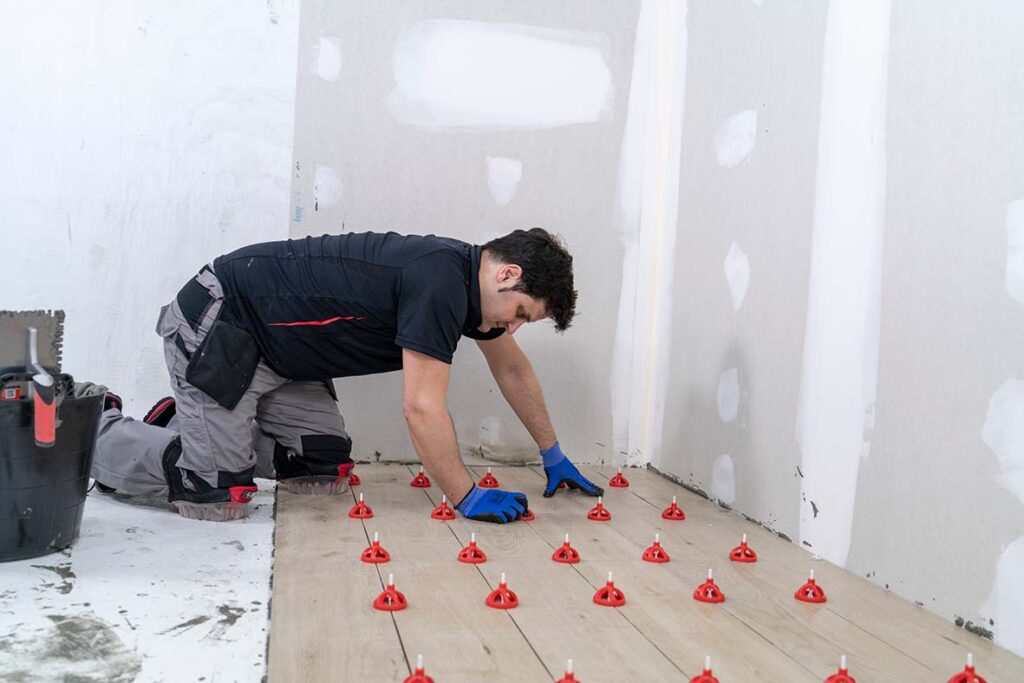
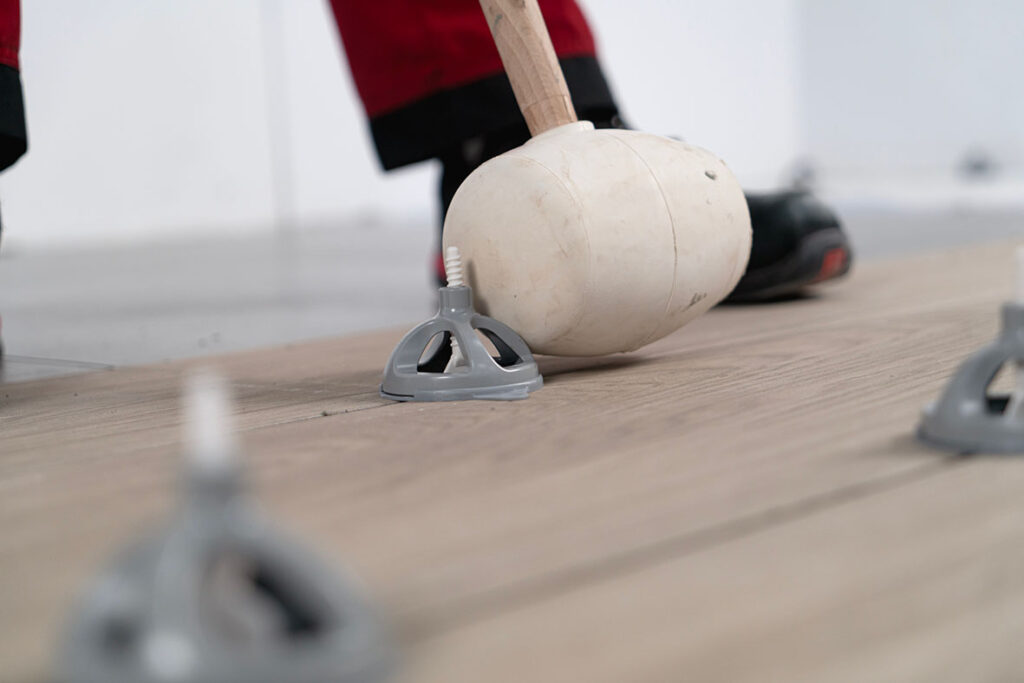
10. TILE SPACERS
A few decades ago, professional tilers used rope, screws, and nails to keep tiles at a set distance from each other during the installation process.
Fortunately, things have changed, and now you can use a tile spacer to obtain the perfect spacing between tiles or even transition into other patterns. When searching for the best tile spacer, the choice depends on your specific needs. However, the most highly recommended option is the tile spacer for 2 mm joints. This spacer works exceptionally well for large-format or rectified ceramic wall and floor tiling projects that require thin joints. The solid structure of the 2 mm tile spacers has been designed to provide greater resistance to bending and pressure.

It’s important to remember that a good tiling specialist needs good quality tile tools. It is not only how skilled or committed you are, it is also the quality of the tile tools you are using, that will enable you to get that amazing final result.
Have we missed some must-have tile tools? If so, let us know in the comments below!
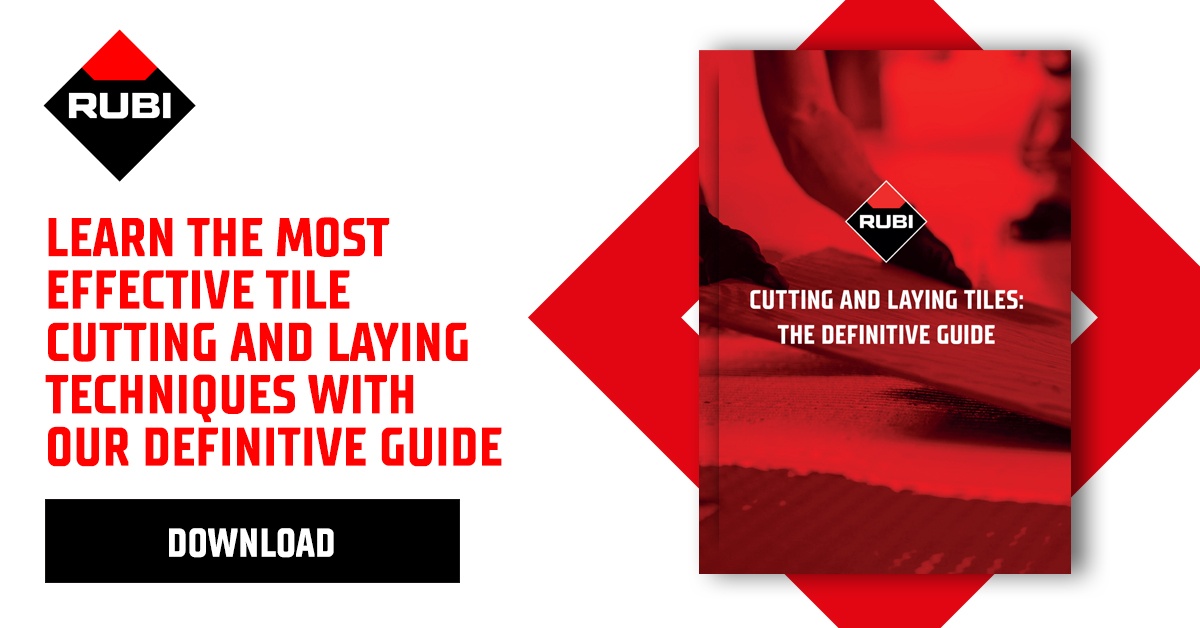



Your blog is really helpful it gives so much information and ideas.
Thanks for your comment Joshua! 😉
Dear Sir,
We are looking for tiles cutter machine, kindly forward your price for different types of machine and other accessories
Hello Chandra!
Please, send us an email to rubiuk@rubi.com.
Thank you!